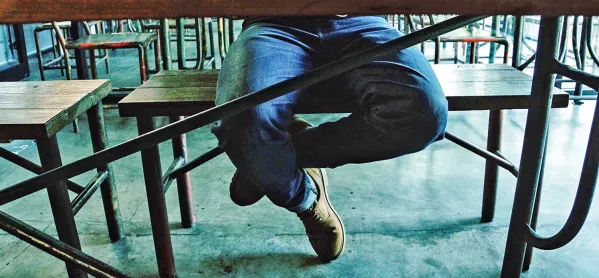I was recently asked by a school for advice about improving the behaviour of a child at break and lunchtimes. Staff were concerned that he was choosing to play on his own and they felt it was important for him to play with others.
“Why are you worried?” was my first question. “Is he hurting anyone? Is he hurting himself? Is he disruptive? Does he look distressed? Does it appear to be impacting on lessons?”
The answer to each of those questions was “no”, so my advice was that they should leave him alone.
The situation brought to mind something I read a few years ago from Mark Neary, a counsellor and advocate and father of a man with autism, who said: “Whenever I read something about behaviour intervention for people with autism, the unspoken is ‘let’s make them more like us’.”
We should consider this statement when working with any child to improve their behaviour.
For example, are you OK with children crossing their legs on their chairs when working?
It never occurred to me that this would be regarded as a behavioural issue, until I was asked by a parent on a tour of the school I worked in whether I was OK with “Nicole” in Year 11 sitting cross-legged on her chair in a maths lesson.
“What’s she doing wrong?” I asked.
The parent explained that her daughter did the same thing at her current school, but was constantly in trouble because their rule was “four chair legs and both feet on the floor at all times”.
I suspect that this came about to prevent children swinging on their chairs - fair enough - but perhaps they’d lost sight of the problem they were trying to solve.
Arbitrary rules
Here’s another example: on break duty on my very first day as a headteacher, I was tentatively asked by a TA: “How do you feel about running in the playground?”
The rule - at least for the next five seconds - was that running was banned in the playground. Overturning that was the easiest decision I’ve ever made as a headteacher.
Do we have rules that children can break that say more about what we think children should look and be like, rather than because they cause disruption to learning?
Reflect on how disruptive to learning haircuts and uniform are, for example, in proportion to conflict created between staff and children through enforcement.
Let’s prioritise things that are disruptive to learning rather than worrying that if we allow children to cross their legs on chairs then, before we know it, our school’s behaviour will nosedive. It won’t.
Jarlath O’Brien is director for Schools at The Eden Academy. His book, Better Behaviour - A Guide for Teachers, will be published by SAGE in 2018.
